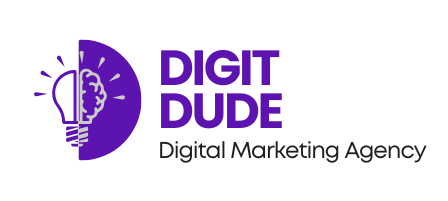In today’s digital landscape, creating content that resonates with both search engines and human readers is an art form. Welcome to your ultimate guide to SEO content writing – where we’ll explore how to craft compelling, optimized content that drives traffic, engages readers, and boosts your online presence.
Understanding the SEO Content Writing Landscape
Before we dive into the nitty-gritty, let’s get one thing straight: SEO content writing isn’t about stuffing keywords into robotic-sounding text. It’s about creating valuable, informative content that answers your audience’s questions while also playing nice with search engine algorithms.
Think of it as cooking a gourmet meal. Your ingredients are your keywords and topics, but the real magic happens in how you combine them to create something delicious (or in this case, readable and rankable).
Know Your Audience Inside and Out
First things first – who are you writing for? Understanding your target audience is crucial. Dive deep into their:
- Pain points and challenges
- Questions they’re asking
- Language and tone they respond to
- Online behavior and preferences
Remember, you’re writing for real people, not just search engines. The more you know about your audience, the better you can tailor your content to their needs.
Keyword Research: The Foundation of SEO Content
Keywords are the building blocks of SEO content. But how do you find the right ones? Here’s a quick process:
- Brainstorm topics relevant to your niche
- Use keyword research tools (e.g., Google Keyword Planner, Ahrefs, SEMrush)
- Analyze search volume and competition
- Look for long-tail keywords (more specific, less competitive)
- Group related keywords into themes or clusters
Pro tip: Don’t just focus on high-volume keywords. Sometimes, lower-volume but highly specific keywords can drive more qualified traffic.
Crafting Compelling Headlines and Meta Descriptions
Your headline and meta description are like the cover of a book – they’re the first thing users see in search results. Make them count!
For headlines:
- Include your primary keyword
- Use numbers or power words (e.g., “Ultimate,” “Essential,” “Proven”)
- Keep it under 60 characters if possible
For meta descriptions:
- Summarize your content’s value proposition
- Include your primary keyword naturally
- Aim for 150-160 characters
- Use an active voice and a clear call-to-action
Structure Your Content for Readability and SEO
Now, let’s talk about the meat of your content. A well-structured article is easier for both readers and search engines to digest. Here’s a winning structure:
- Introduction: Hook your reader and preview what’s to come
- Subheadings (H2, H3): Break up your content into scannable sections
- Short paragraphs: Aim for 2-3 sentences per paragraph
- Bullet points and numbered lists: Great for easy skimming
- Conclusion: Summarize key points and include a call-to-action
Remember to naturally incorporate your keywords throughout the content, especially in your introduction, subheadings, and conclusion.
The Art of Writing Engaging, SEO-Friendly Content
Here’s where the real magic happens. Writing content that’s both SEO-friendly and engaging is a balancing act. Here are some tips:
- Start with a compelling hook
- Tell stories or use analogies to explain complex concepts
- Use transitional phrases to improve flow
- Incorporate data and statistics to back up your points
- Use a conversational tone (like we’re doing here!)
- Address the reader directly using “you” and “your”
- Ask questions to keep the reader engaged
Optimize Your Content Beyond Text
SEO isn’t just about words. Here are some other elements to optimize:
- Images: Use descriptive file names and alt text
- Videos: Include transcripts and optimize titles and descriptions
- Internal linking: Link to other relevant pages on your site
- External linking: Link to authoritative sources to back up your claims
The Importance of E-A-T (Expertise, Authoritativeness, Trustworthiness)
Google places a high value on E-A-T, especially for YMYL (Your Money or Your Life) topics. To boost your E-A-T:
- Showcase your credentials or expertise
- Back up claims with data and reputable sources
- Keep your content up-to-date and accurate
- Encourage user engagement through comments or social shares
Mobile Optimization: A Must-Have
With mobile-first indexing, ensuring your content looks great on mobile devices is crucial. Consider:
- Using shorter paragraphs and sentences
- Implementing responsive design
- Optimizing images for faster loading
- Using legible fonts and appropriate font sizes
Measuring and Improving Your SEO Content
Last but not least, track your content’s performance and continuously improve. Here’s a simple framework:
| Metric | What It Measures | Tools to Use |
|---|---|---|
| Organic traffic | How many visitors your content attracts from search engines | Google Analytics |
| Bounce rate | How engaging your content is | Google Analytics |
| Time on page | How long visitors spend reading your content | Google Analytics |
| Keyword rankings | How well your content ranks for target keywords | SEMrush, Ahrefs |
| Backlinks | How many other sites link to your content | Moz, Ahrefs |
| Conversion rate | How effectively your content drives desired actions | Google Analytics, heat mapping tools |
Use these insights to refine your content strategy over time.
Conclusion: Bringing It All Together
SEO content writing is a journey, not a destination. It’s about continuously learning, adapting, and improving. Remember, at its core, great SEO content is about creating value for your readers. When you focus on answering their questions, solving their problems, and providing genuine insights, the SEO benefits will follow.
So, armed with these tips and strategies, go forth and create content that not only ranks well but also resonates with your audience. Happy writing!



